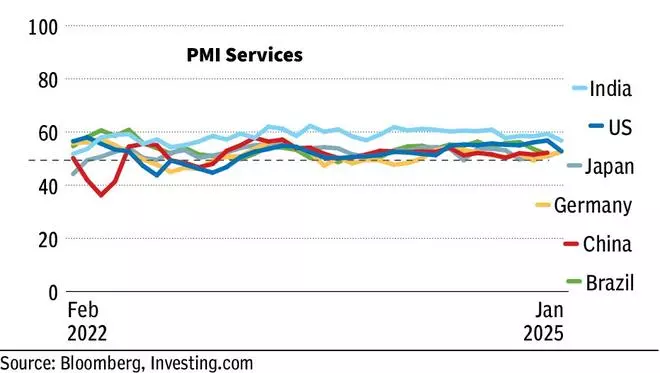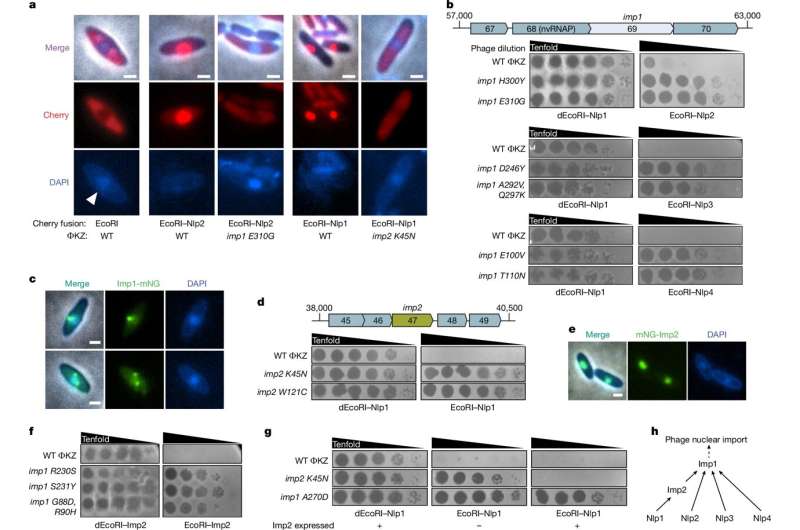Edit Content
Trending






Protein is an important nutrient that plays many roles in your body, such as building and repairing tissues, producing enzymes and hormones, and supporting your immunity.
The Recommended Daily Allowance (RDA) of protein is 0.8 grams per kilogram of body weight for adults. Many experts suggest aiming for closer to 1.2 grams per kilogram to help preserve muscle mass, especially as you age. Protein should make up 10-35% of your daily calories.
Getting enough protein at each meal is essential, but it’s easy to overlook it during a busy workday. These high-protein lunch ideas will help you feel full, energized, and nourished throughout the day.
A turkey and avocado wrap is a quick, protein-packed lunch that is easy to pack or assemble at home. Turkey breast has 22 grams of protein per 100-gram (3.5-ounce) serving. It also has nutrients like selenium, which helps protect cells from damage.
Use a high-protein wrap for an extra 10 grams of protein, bringing the total to 32 grams. Add avocado for healthy fats, leafy greens, and vegetables like tomato or cucumber for additional nutrients and flavor.
With their higher fiber content, whole grains like quinoa can support heart, weight, and gut health. A cooked cup of quinoa has 8 grams of protein.
Pair quinoa with shrimp, which has 20 grams of protein per 3-ounce cooked portion, for a total of 28 grams of protein. Add your favorite vegetables, a drizzle of olive oil, and a squeeze of lemon for a healthy lunch bowl.
Leafy greens make the perfect base for a grilled chicken salad. At 31 grams of protein per 100-gram (3.5-ounce) cooked serving, chicken breast also provides nutrients like iron, essential for healthy red blood cells, muscles, and organ function.
Add vegetables like cherry tomatoes, sliced cucumbers, red onions, or any of your favorites for a boost of fiber, nutrients, and antioxidants.
Cottage cheese has 24 grams of protein per 1-cup serving and makes a great dip for vegetables like bell peppers, broccoli, and celery. Add fruits such as grapes or berries, whole grain crackers, and mixed nuts for healthy fats and an extra 6 grams of protein per ounce, totaling 30 grams.
Cottage cheese is packed with calcium and phosphorus, which are good for bone health. It is also an excellent protein choice for a satisfying charcuterie board.
For a protein-packed plant-based option, try lentil soup. A cooked cup of lentils has 18 grams of protein and 16 grams of fiber. They’re also packed with folate, which keeps red blood cells and tissues healthy.
Start by sautéing onion, carrots, and celery. Add lentils and broth and cook until the lentils are tender. Serve with whole grains like brown rice, which adds 5 grams of protein per cooked cup, bringing the total to 23 grams.
Eggs are rich in choline, a nutrient vital for brain and nervous system functions like memory, mood, and muscle control. Two large eggs provide 12 grams of protein.
Mash hard-boiled eggs with mayonnaise or avocado, add diced celery, onion, and herbs, and serve on high-protein bread (8 grams for two slices) along with a slice of cheddar cheese (7 grams) for a total of 27 grams of protein.
For a quick steak stir-fry, choose lean cuts like flank steak (24 grams of protein per 3-ounce cooked portion). Beef is also high in zinc, which supports the immune system.
Thinly slice the beef and sear it in a hot pan. Add a mix of colorful vegetables, such as bell peppers, broccoli, and snap peas. Toss with a simple sauce of low-sodium soy sauce, garlic, and ginger. Serve with grains like wild rice, which adds 7 grams of protein per cooked cup, bringing the total to 31 grams.
Tuna pasta salad is a great make-ahead option. Combine cooked whole-grain pasta (about 6 grams of protein per cooked cup) with a 3-ounce portion of canned tuna (22 grams of protein) for a total of 28 grams of protein.
Add diced vegetables like cherry tomatoes, cucumbers, and bell peppers and a light dressing made from olive oil, lemon juice, and mustard. Tuna is rich in omega-3 fatty acids, which support your heart health.
Burrito bowls are like a burrito without the tortilla. Build a bowl with leafy greens, corn, onions, bell peppers, and black beans (15 grams of protein per cup). Add avocado, salsa, and an ounce of shredded cheese (7 grams of protein) for a total of 22 grams of protein.
Like lentils and other legumes, beans are rich in potassium, which is important for proper heart, muscle, and nerve function.
Prepare a salmon meal the night before with a base of quinoa (8 grams of protein per cup). Then add roasted salmon (21 grams of protein per 3-ounce portion) and steamed or roasted vegetables like broccoli, carrots, or zucchini. Drizzle with olive oil and lemon juice.
This meal has 29 grams of protein and heart-healthy omega-3 fatty acids from the salmon. Fatty fish like salmon are also rich in vitamin D, which supports bone, immune, muscle, and nerve health.
Make ground pork lettuce wraps using Boston or butter lettuce. A 3-ounce serving of cooked ground pork has 22 grams of protein and is a good source of B vitamins that support energy production.
Sauté the pork with garlic, ginger, and a splash of hoisin or soy sauce. Add water chestnuts and green onions for crunch and extra flavor. Spoon the mixture into lettuce leaves and top with shredded carrots and sesame seeds.
Mediterranean chickpea salad is perfect for making in a large batch. It stores well in the refrigerator for up to three days. Chickpeas provide 18 grams of protein per cup, and adding an ounce of crumbled feta cheese adds another 4 grams, bringing the total to 22 grams.
Toss with cucumbers, cherry tomatoes, red onions, artichokes, and fresh parsley. Finish with a drizzle of olive oil and lemon juice. Like other legumes, chickpeas contain magnesium, which is needed for more than 300 bodily reactions, including blood sugar control and steady heartbeat.
Tempeh is a high-protein fermented food made of soybeans. It provides 20 grams of plant protein per 100-gram (3.5-ounce) serving and is rich in nutrients like folate, iron, and phosphorus. To make a tempeh sandwich, marinate sliced tempeh in low-sodium soy sauce, garlic, and onion powder, then pan-sear it.
Layer it on high-protein bread (about 8 grams of protein for two slices) with leafy greens, sliced tomato, avocado, and your favorite condiments for about 28 grams of protein.
Chili is an excellent make-ahead meal that can be batch-prepped and reheated. Use lean ground beef (25 grams of protein per 3-ounce serving) or ground turkey (23 grams per 3-ounce serving).
Brown the meat with onions, garlic, diced tomatoes, and spices like chili powder, cumin, and paprika. Simmer until the flavors meld. Top with shredded cheese or a dollop of Greek yogurt to boost the protein to 30–35 grams per serving. Enjoy with bread, grains, or potatoes.
Greek yogurt adds protein and calcium to this chicken salad, made with chicken breast (31 grams of protein per 3.5 ounces) and plain Greek yogurt (10 grams per 3.5 ounces) for a total of 41 grams of protein.
Combine the chicken and yogurt with diced apples, celery, grapes, nuts, fresh herbs, and seasonings like paprika and garlic powder. Serve on whole-grain bread, in a wrap, or over greens.
Fortified tofu is a great source of plant protein and calcium. To make a plant-based stir-fry, use firm tofu (16 grams of protein per quarter of a block serving), press to remove excess moisture, and cut into cubes.
Sauté the tofu and add vegetables like broccoli, carrots, and snap peas. Toss with low-sodium soy sauce, sesame oil, and a hint of honey. For more flavor, add minced garlic, grated ginger, and a splash of rice vinegar or chili paste. Serve with rice or noodles.
Canned salmon is a convenient, protein-packed option for making a salmon wrap without cooking. A 3-ounce portion contains 20 grams of protein, along with calcium and vitamin D.
Spread hummus on a wrap, then add a handful of spinach or mixed greens, plus cucumber and tomato slices. Top with the canned salmon, drizzle with lemon juice, and roll up tightly. Use a high-protein wrap for an extra 10 grams of protein, bringing the total to 30 grams.
For a quick meal, prepare an egg and vegetable scramble anytime during the day. Sauté diced bell peppers, onions, and spinach in olive oil, then add chopped tomatoes and your choice of spices. Whisk together two large eggs (each containing 12 grams of protein) and pour them into the pan, scrambling until cooked.
Top with optional shredded cheese and fresh herbs like chives, parsley, or cilantro. This meal pairs well with high-protein toast and high-protein grains like quinoa, which can bump the protein to about 20 grams.
For a nourishing and hearty soup, combine great northern beans (19 grams of protein per cup) with kale and savory vegetable broth. Onions, garlic, and thyme create a flavorful base. Kale adds vitamin K, which supports blood clotting and bone health.
This comforting, easy-to-make soup can be prepared in advance for a quick meal. Enjoy with toast or crusty bread.
A peanut butter sandwich is one of the most convenient and quick meal options. It contains 7 grams of protein per serving of 2 tablespoons. Boost the protein content by using high-protein bread, which can offer 4 grams or more per slice.
Mix the peanut butter with an ounce of crushed peanuts for extra protein, adding another 7 grams of protein. This combination brings the total to 22 grams of protein or more. Peanuts also provide nutrients like fiber, healthy fats, and vitamin E, an antioxidant that helps protect cells from damage.
Incorporating high-protein foods into your lunch can help keep you full and energized throughout the day.
From animal-based proteins like beef, eggs, and poultry to plant proteins like soy products and beans, these easy lunch ideas pack great protein content and a variety of essential nutrients. Don’t be afraid to mix and match ingredients to find what works best for you.
©2024. Livebuzznews. All Rights Reserved.